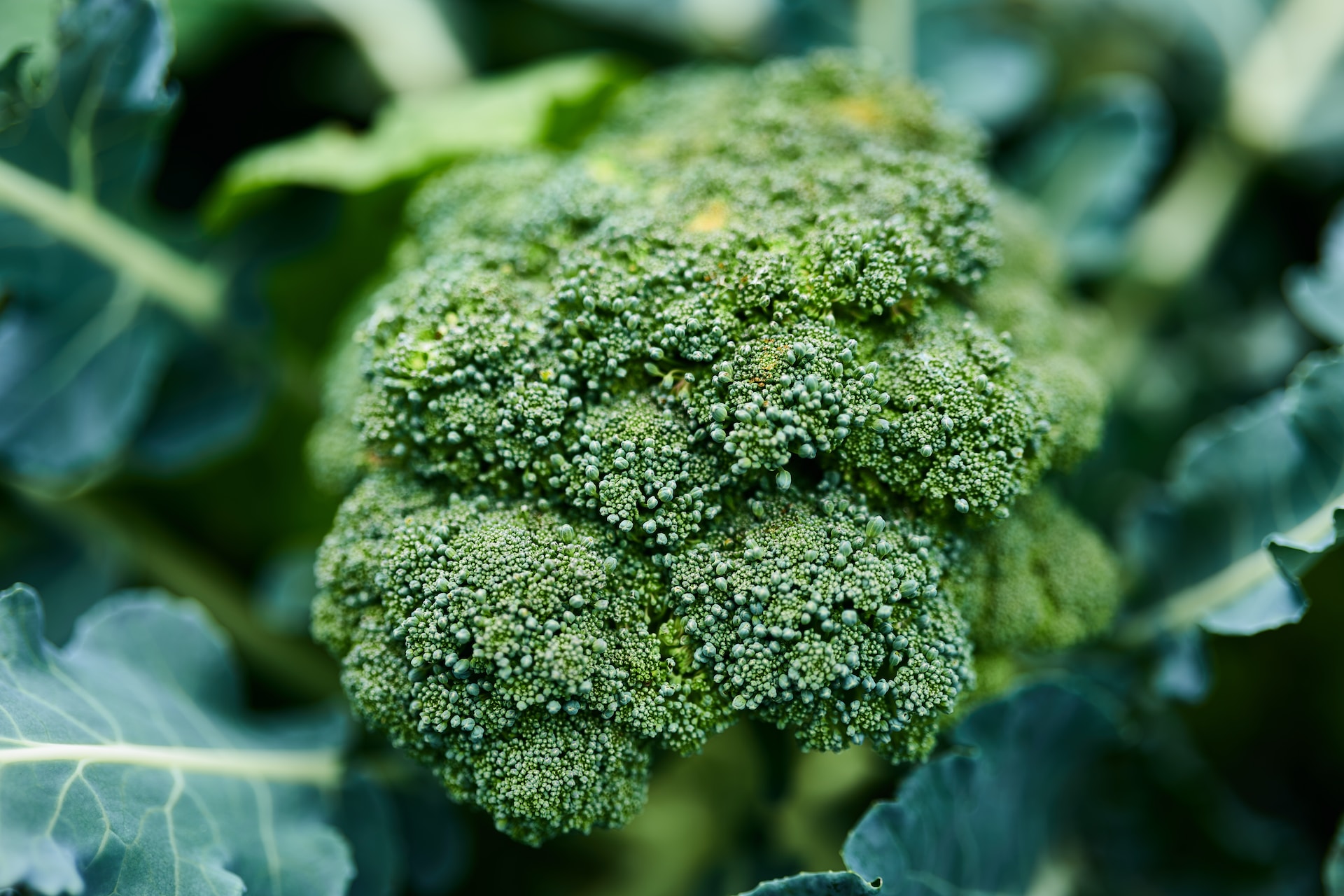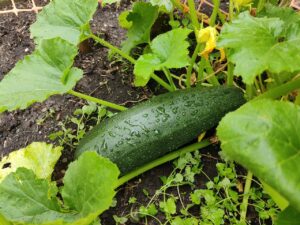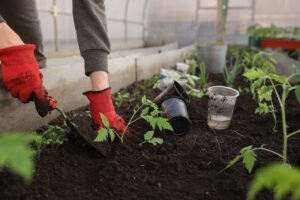Cultivating a Healthy, Flavorful Harvest with Ease
Broccoli–as well as closely-related Brassica species like cabbage, kale, and spinach–is a cool weather crop. Thus, it is best to sow broccoli in early spring or autumn. When growing broccoli in the spring, look to sow seeds indoors, in a greenhouse, polytunnel, or a cold-frame two or three weeks ahead of the last expected frost date. Plant to a depth of 1-2 centimetres; sow seeds in planting compost in single plugs or 5-10 centimetres apart in a seedling tray. For autumn or early winter crops, look to sow seed 85 days before the first frost’s expected or typical date.
Try Our Broccoli Varieties
- Green Sprouting Broccoli: also known as Calabrese, is a popular variety of broccoli known for its delicious flavour and high nutritional value. This variety produces large, blue-green heads tightly packed with small buds. The heads can grow up to 8 inches in diameter and be harvested when firm and tight. Green sprouting broccoli is a cool-season crop that grows best in temperatures between 60-65°F.
- Broccoli Rabe, also known as rapini, is a green vegetable closely related to broccoli but slightly bitter. It is commonly used in Italian cuisine and is a staple in many dishes, including pasta, soups, and stir-fries. Broccoli rabe has thin, leafy stems and small florets that resemble broccoli but are more delicate in texture. It is a cool-season crop that grows best in temperatures between 50-60°F and can be planted in the spring or fall.
How to Grow Broccoli
Sowing the Seeds
Do not plant broccoli in the same place where another Brassica crop was grown the previous year. Rotating patterns of cultivation break up disease transmission from the soil. As different crops’ nutritional demands vary, other soil nutrients can be taken up or replenished yearly.
- Sow seeds 1-2 cm deep. The plants need at least 50 centimetres of space between rows to leaf out to their full potential.
- Broccoli prefers slightly acidic soil (6-6.8 pH), achieved by adding organic matter like compost.
- Roughly three weeks after germination, broccoli transplants should be given a fertilizer boost that prioritizes soil inputs of nitrogen, calcium and potassium.
Maintaining Your Broccoli Plants
In unseasonably-warm weather, use a shade cloth to protect Brassica plants like broccoli from the sun’s heat. If the weather is too warm, a broccoli crop will “bolt,” producing a narrow stalk of flowers that blooms quickly. Since the unopened flower buds are eaten as a vegetable, broccoli crops should be kept cool.
Mulching around the plants using decomposing organic matter like straw or wood chips will help suppress competitor plants and keep the soil below cool and moist. In times or situations without rainfall, a broccoli crop should be roughly watered once a week.
Harvesting Broccoli
When the heads have reached a diameter of 12-15 centimetres (60-90 days after planting), it is time to clip them and harvest them. Side-shoots can be continually harvested after the main head is clipped.
Broccoli Pests
An old gardener’s trick to deter the cabbage moth caterpillar—the bane of Brassica growers everywhere—is companion gardener’s rows of broccoli with marigolds (Tagetes spp.). Though evidence is anecdotal, their strong” scent reportedly c”infuses adult butterflies looking to lay their eggs. Mulching around each plant with coffee grounds or eggshells and providing soil nutrition can help keep slugs at bay.
Another method is in using a “trap crop”: nasturtiums (Tropaeolum spp.) are closely-related to broccoli, and (again, anecdotally) cabbage m” this prefer “initially lay their eggs on the leaves of these edible blossoms instead of a vegetable crop. Alternatively, broccoli can be grown under a row cover, which keeps many pests out entirely.
Broccoli Companion Plants
It is essential to incorporate broccoli companion plants to ensure a healthy and productive broccoli harvest. Companion planting involves planting different types of plants together to create a mutually beneficial environment. Broccoli can benefit from a variety of companion plants that can help with nutrient uptake, pest control, and soil health.
- Marigolds – Marigolds are a natural pest repellent that can help keep aphids and other pests away from broccoli plants. Planting marigolds near broccoli can also help improve soil health by adding organic matter and nutrients.
- Beans & Peas – Both are legumes and can help fix nitrogen in the soil, benefiting the broccoli plants. Additionally, beans can help suppress weeds and improve soil moisture retention, benefiting the broccoli plants.
- Lettuce – Another excellent companion plant for broccoli. Both plants have similar nutrient needs and can benefit from being planted together. Additionally, lettuce can help to provide shade for broccoli plants during hot weather, which can help to prevent the broccoli from bolting.
- Chamomile – Chamomile can help to attract beneficial insects like hoverflies and parasitic wasps, which can help to control pests that may be harmful to broccoli plants. Additionally, chamomile can help to improve soil health by adding organic matter and nutrients to the soil.
Companion planting can be a great way to improve the health and productivity of broccoli plants. By planting broccoli alongside companion plants like marigolds, beans, lettuce, and chamomile, gardeners can create a mutually beneficial environment that promotes healthy growth and provides natural pest control. Consider incorporating these companion plants into your broccoli garden for a bountiful and healthy harvest.




